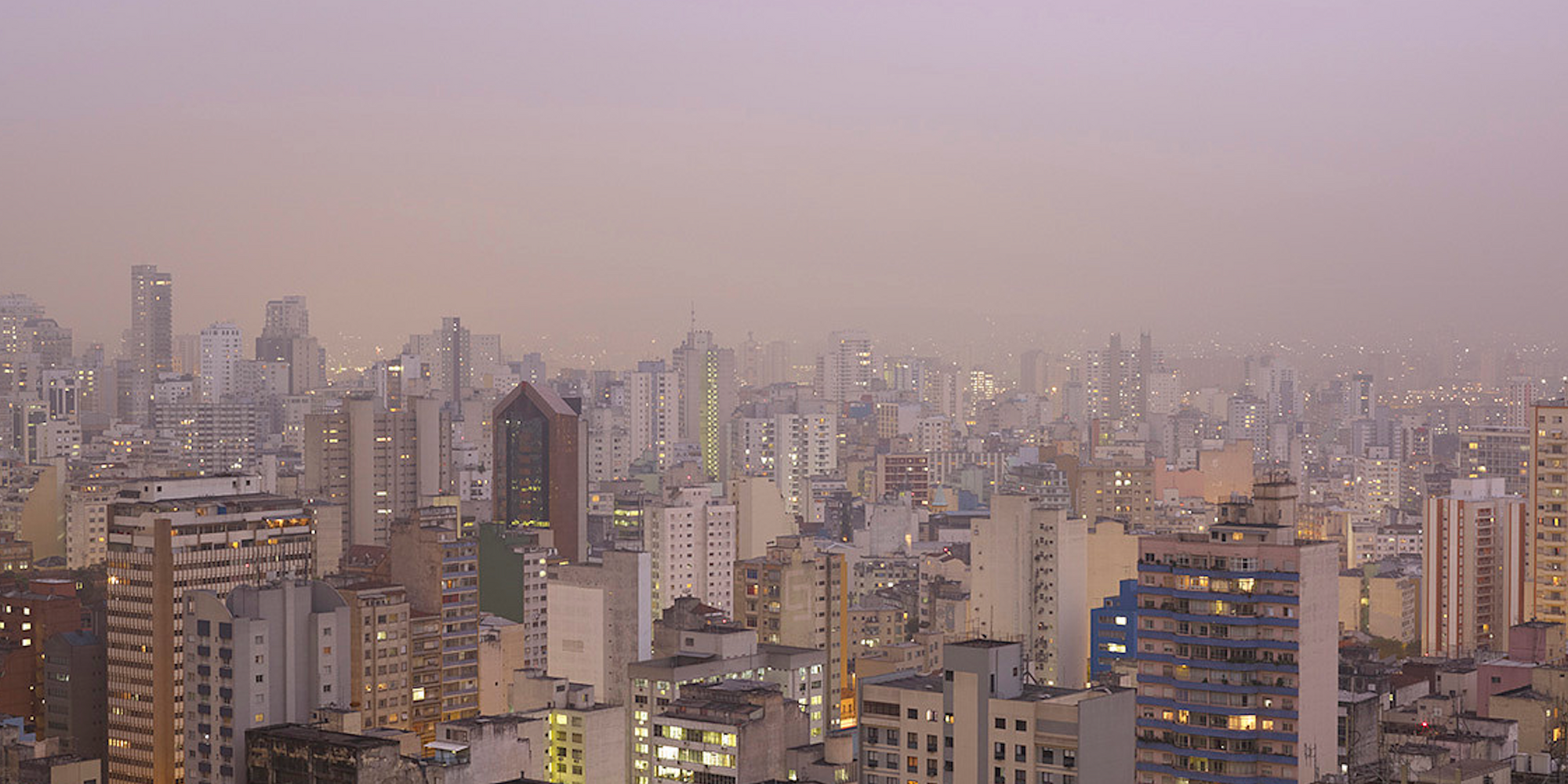
Landscape and Distance in the Art of Suwon Lee
The Venezuelan artist reflects on her reinterpretation of classic Latin American landscapes.
Suwon Lee, Madeline Murphy Turner
Nov 11, 2020
In 2011, Venezuelan artist Suwon Lee (born 1977) took a series of photographs that she titled Crepuscular. The works reinterpreted the Latin American landscape tradition by shifting perspective. Three of these photos—The most dangerous city in the world (La ciudad más peligrosa del mundo), Purple Haze, and Lights On—were shot at dusk in Caracas, Maracay, and São Paulo, respectively.
Lee made these works by placing her camera at spots that have been reproduced endlessly in urban views and in each country’s art history, yet deliberately leaving out the iconic elements. Major tourist attractions like Corcovado in Rio de Janeiro and El Ávila in Caracas vanish from the photographs, their presence felt only through omission. Lee’s photographs counter the idealized landscape with images that show the current lived realities of cities, realities rooted in complex processes of modernization. In this interview, Lee discusses her working process, the construction of the landscape in Venezuelan history, and the importance of environmental issues to her artistic thinking.
This conversation, which was conducted in Spanish, is part of a series of interviews with artists whose works were donated to MoMA in 2017 by Patricia Phelps de Cisneros. The interviews explore art’s relationship with territory and nature, a subject that was chosen as the research focus of the Cisneros Institute for the 2020–23 period.
This interview has been translated from Spanish by Jane Brodie.
Este artículo está disponible en español.
Madeline Murphy Turner: To start out, I’d like to know about how you began working with photography.
Suwon Lee: I started taking photos in 2004, mostly self-portraits and works with autobiographical themes. In Madrid in 2006, I met the German photographer Axel Hütte, who would become my teacher, friend, and mentor. Thanks in large part to his influence, I began to be interested in landscape photography, especially nocturnal and urban landscapes. I took his advice and, with his help, bought a medium-format Phase One 645DF digital camera in 2009. That was when I started taking photographs of landscapes at night. I could print them at a relatively large, though not giant, scale (90 × 120 cm) without compromising quality. I was interested in portraying the city where I lived at the time, Caracas, and in exploring the landscape. The landscape had ceased to capture the interest of Venezuelan contemporary art, though it was a recurring theme for the early-20th-century Círculo de Bellas Artes painters, including the most celebrated of them, Armando Reverón.
What inspired you to make the Crepuscular series?
To make Crepuscular, I decided to investigate not only Caracas, but also other cities that I visited. The idea was to explore and rethink the contemporary landscape by positioning myself in unlikely places in order to find new urban views and, with them, a new interpretation of and perspective on those cities. With that in mind, I took photos not only of Venezuelan cities like Caracas, Maracay, Mérida, Maracaibo, and Araya, but other Latin American cities as well, like Panama City, Lima, Porto Alegre, Rio de Janeiro, and São Paulo. I would work at dusk—that fleeting moment of transition when the sun has gone down and city lights start coming on, a time of day that offers unusual and less obvious views. I call them “anti-clichés.” I took portraits of Rio de Janeiro from Corcovado, my back turned to it to look down at the city’s port; of Lima, from the coast looking out to San Lorenzo Island; and of Caracas, in The most dangerous city in the world. That work shows Petare, the city’s largest neighborhood, from El Ávila mountain, an iconic spot at the center of so many paintings and photographs. I did not take a portrait of El Ávila, but of what can be seen from it: that district that anyone who has been in Caracas has seen from the freeways that run beside it, but rarely from a bird’s-eye view, that is, from the mountain.
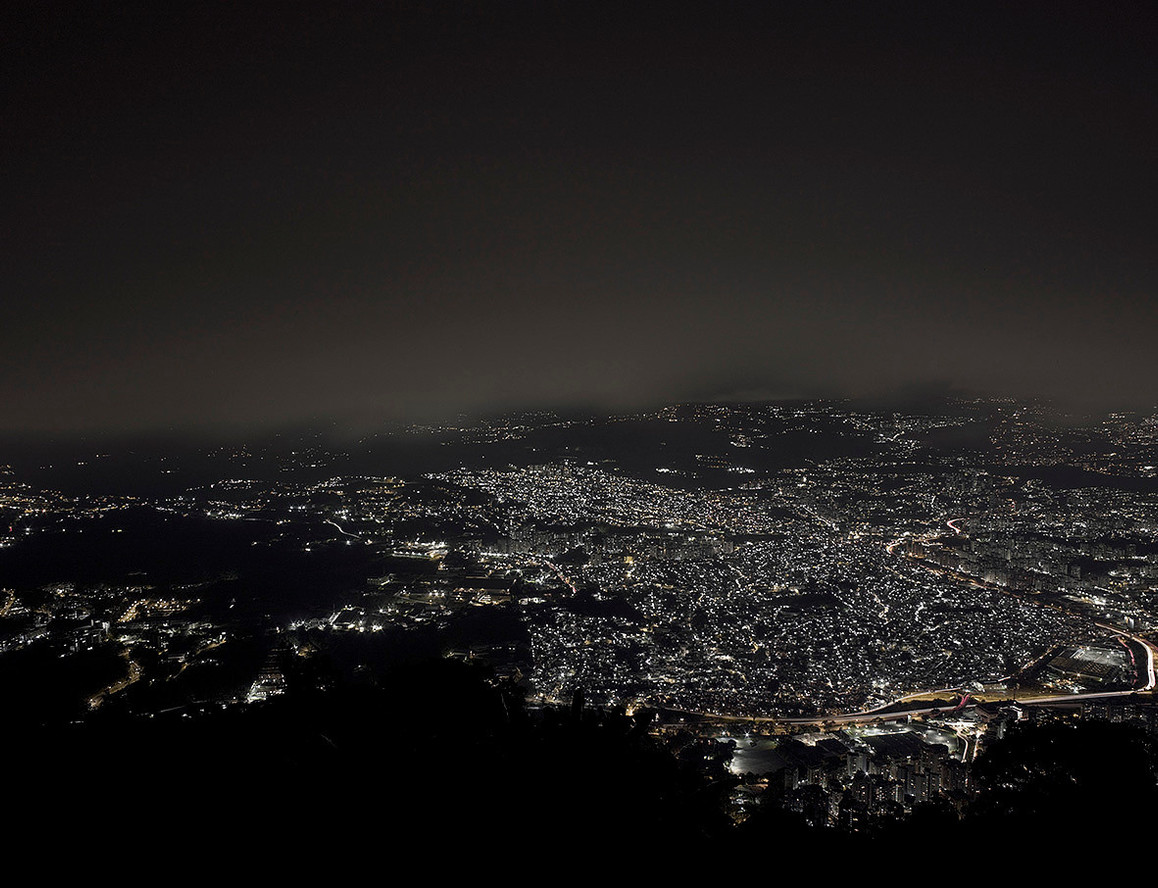
Suwon Lee. The most dangerous city in the world. 2011
And how were you able to take the photo of El Ávila for The most dangerous city in the world?
There is a small settlement in El Ávila National Park called Santa Rosa. Though access is restricted to those who live there, I was able to get up to the settlement to take the photograph in the late afternoon with no fear of getting robbed—a common occurrence anywhere in Caracas and Venezuela in general. That time, I took the photos at twilight, but the one I took slightly later, after night had fallen, turned out better. For that shot, the exposure time was several minutes (more than four) to capture all the lights in the houses in the neighborhood below and the atmosphere created by the clouds and the freeway lights. Whenever I show this photo to a Venezuelan, they can never identify the image as of Caracas, let alone Petare. Petare is the image we have of it and nothing else: a daytime image from a car speeding down the freeway, or the place in all the news stories about the violence that happens there. For a number of consecutive years, Caracas has been ranked the most dangerous city in the world. An image of Petare that is beautiful might be jarring, but it is beautiful thanks to the distance (space) and the light (exposure time).
In addition to The most dangerous city in the world, two other photographs from the Crepuscular series—Lights On and
I shot Lights On at Henri Pittier National Park, the first national park established in Venezuela. The park is in the state of Aragua, and its treacherous narrow and curved roads lead to the coastal settlement of Choroní, where I have spent a lot of time. The view is from the city of Maracay, where I lived for years as a child, with the mountains of San Juan de Los Morros in the background. People usually speed down these roads, especially if they are driving during the day. The public buses from Maracay go through the mountains at top speed blaring music to signal other drivers to pull over so they can pass. So it is with a mix of speed, elation, and tension that people make their way through an exuberant landscape.
But I always wanted to stop and take in the view of the city where I grew up. I felt that the speed and the haste denied us the chance to dwell, to observe, to contemplate, to remember. There is not a single lookout or rest area to take in the landscape from that road built by prisoners—many of whom perished in the process—during the Marcos Pérez Jiménez dictatorship. I was finally able to park my car at the side of the road one afternoon, and I spent half an hour taking photos, a number of them with exposure times of several minutes, just as the lights were going on in Maracay in the distance. Even though there is not a lot of traffic at that time of day, taking the photos was pretty risky, because of where I was standing. A car coming down the road stopped right by my car. Luckily, my partner was able to start the engine quickly and I dived in to get away, just like in a movie. In the rearview mirror, I saw a man getting out of his car; he took what appeared to be a gun out of his pocket. I was, fortunately, able to photograph the landscape, the mountains, and Maracay without getting robbed.
Purple Haze was taken in São Paulo, from Edificio Copan, a building designed by Oscar Niemeyer and one of the most emblematic structures anywhere in Brazil. I had been at the Mercosur Biennial and, during a stopover in São Paulo, I was given access to the building thanks to Capacete, an artist residence that has an apartment there; they let me in to take photographs at night. Once again, I didn’t want to photograph that icon, but the view from it. Instead of capturing the city like a foreigner, I wanted to delve into it like a local, to hang from the eaves of the building to take the photographs. To my surprise, the smog left a purple layer over the city—the camera was able to capture something the naked eye could not. A lot of people think that photo was taken in Caracas—and it’s true that the architectural style of those concrete buildings from the 1960s, ’70s, and ’80s is similar—it’s just that São Paulo is 10 times bigger and more populated than Caracas. One characteristic of that enormous, and somewhat oppressive, city is that from almost nowhere in it can you see the horizon. That’s how big and dense it is.
Could you tell us about some of the formal decisions you made in producing these works?
The premise was to take each shot from an elevated point at a certain distance from the landscape at dusk. In all three cases, the photo session would last from 30 to 60 minutes, no more; the exposure times would be long enough (several minutes) to capture enough light to render the atmosphere, and the light itself, blurry. At least one half of the image is of the city and the other half of the sky—except in the case of Lights On, where the landscape takes up about one third of the image and then extends to the midway point with the clouds that lead up to a clearer section of the sky. All of those formal decisions are conscious, if more instinctive than rational. Before a session, I have never planned out all the details; the compositions always depend on the physical situation and the light. I frame, look through the viewfinder, and—when the image works visually—I steady the camera and take the shot. There is always an element of chance because I never know the results of capturing the light for several minutes. That is the unpredictable magic of long exposure times.
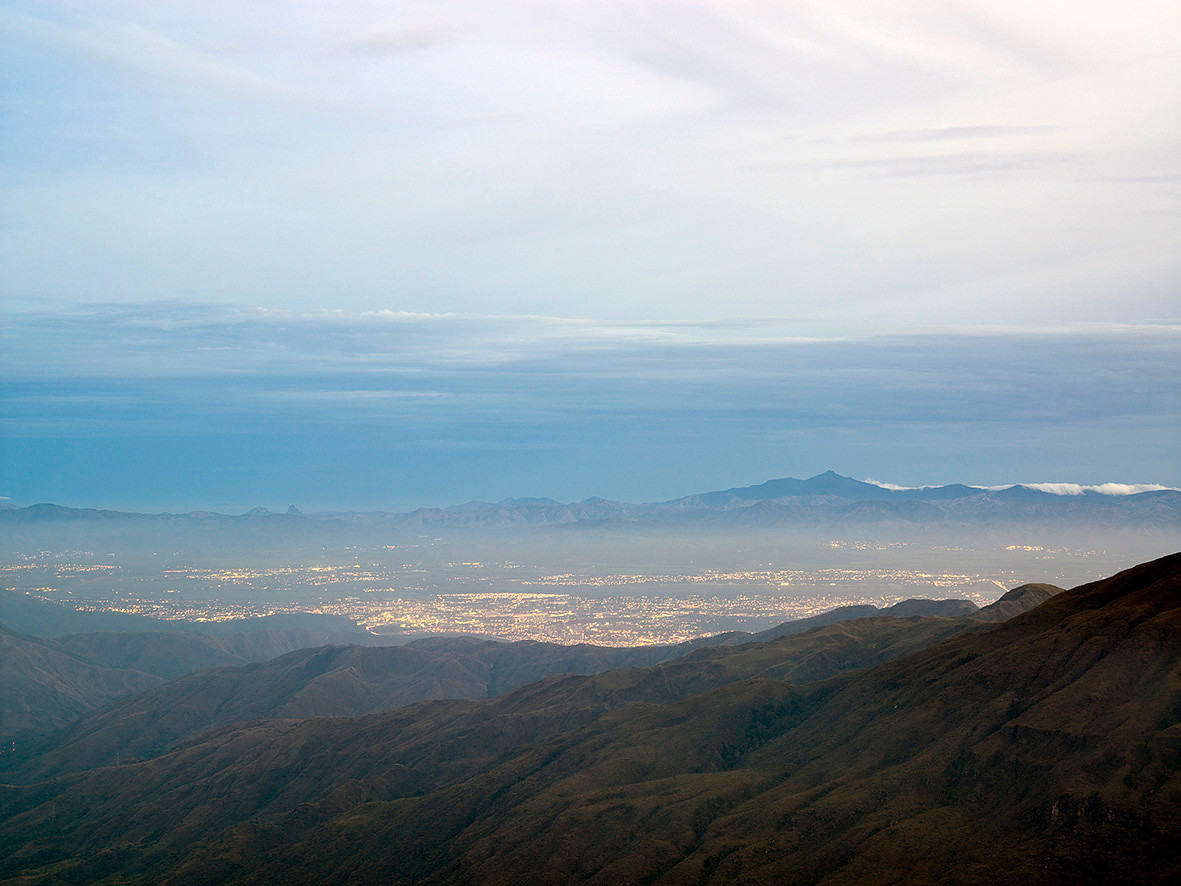
Suwon Lee. Lights On. 2011
In a recent interview, you spoke of your interest in the environment, ecology, and microorganisms. While these photographs focus on urban views, they also show mountains, the sky, and the atmosphere. Is there an environmental reading of these works? What is your understanding of the relationship between city and nature?
In the photos taken in Venezuela, my view of the city is possible thanks to El Ávila and Henri Pittier national parks. It is through them that I have been able to enjoy nature in my country. Though I have always been a city person, I draw sustenance and inspiration from the natural environment. I could not have lived in and enjoyed Caracas without the proximity of El Ávila, or Choroní without the nearby rivers and shores. It’s as if the grandeur of nature and the landscape helped me to accept the harsh social reality. Petare could only be looked at that way from El Ávila, just as the nobility of the Maracay landscape was only evident from the dangerous roads of Henri Pittier.
In both Lights On and Purple Haze, the smog is striking; it impregnates the image with a certain sadness or romanticism—or whatever it makes you feel. In broader terms, when we grasp that absolutely everything in this world and in the universe is interconnected, we understand that we are the result of nature’s evolution, and we cannot exist without her. We let cities grow indiscriminately and pollution increase; we couldn’t care less, it seems, about the ecosystems we destroy along the way. Somewhat powerless, we passively witness this abduction of nature. [In A Cinema Prayer, Andrei] Tarkovsky said, “We are dependent on nature. We are the result of its evolution. I think to neglect nature, from an emotional and artistic point of view, is a crime. Above all it is stupid, because nature always give us the sensation of the truth.” The urban landscape can be contemplated and beheld thanks to the distance and shelter provided by nature. The only way cities and their inhabitants can survive is if they become profoundly aware of the importance of safeguarding natural resources and the environment in a sustainable fashion.
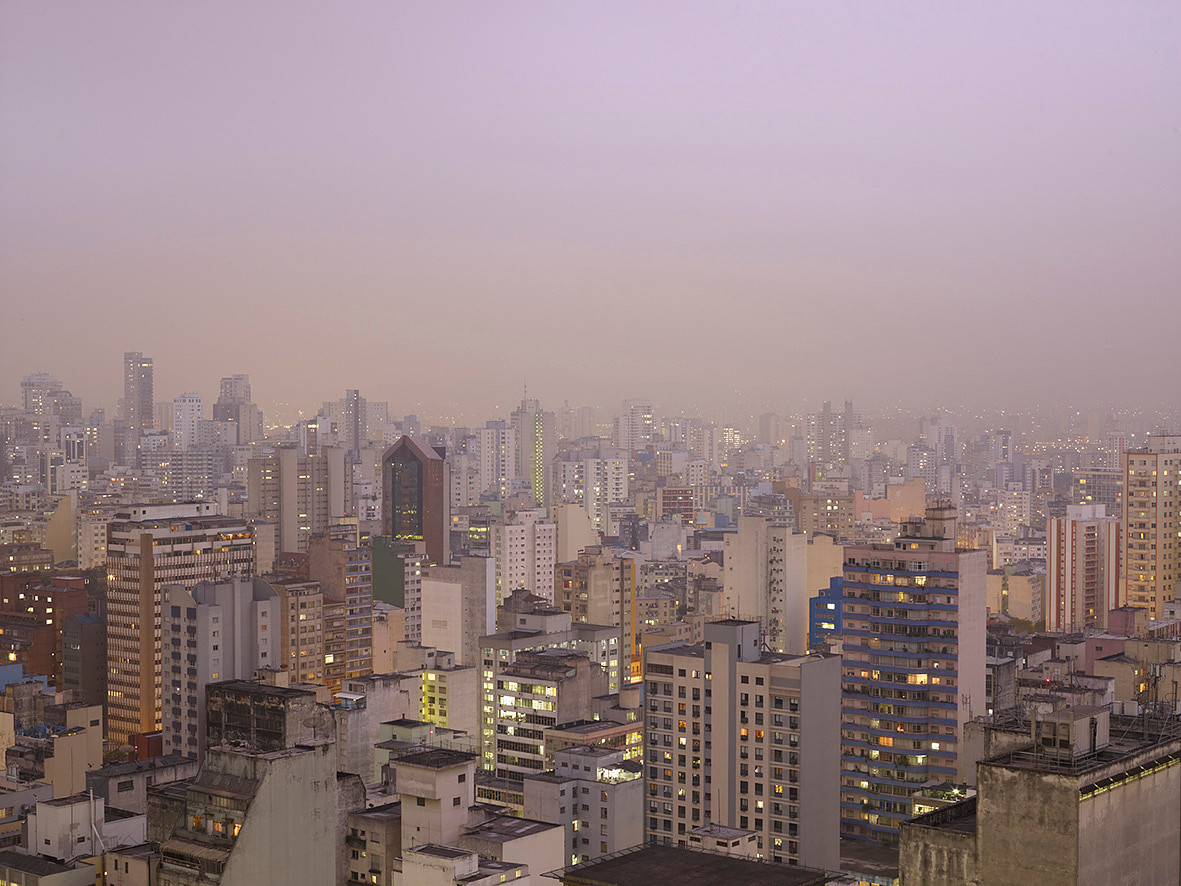
Suwon Lee. Purple Haze. 2011
The landscape in the Americas has a long history—I am thinking specifically of 18th-century traveler artists. What, in your view, is the relationship between The most dangerous city in the world, Purple Haze, and Lights On and that long and complex history? How do you engage the concepts of the picturesque and the sublime—if you engage them at all, that is?
I drew a lot of inspiration from the Venezuelan Círculo de Bellas Artes painters, who in turn were influenced by the foreign painters and naturalists that came through Venezuela in the 18th and 19th centuries, figures like Alexander von Humboldt, Anton Goering, and Ferdinand Bellerman. A certain distance from the environment is needed not only to explore it, but also to take an interest in it—and that happened when European explorers and naturalists who formed part of the romantic movement arrived. They valued the landscape and nature as a means to channel grandeur and the sublime.
When Humboldt arrived in Caracas, he asked how to climb El Ávila. None of his hosts knew what to tell him, because it had never occurred to any of them to climb the mountain at all, let alone up to La Silla de Caracas, one of its highest peaks. Not until a foreigner with a romantic vision of the world arrived did the locals start to look at their immediate environment differently. Those European explorers and naturalists were the ones who taught us to value nature’s intrinsic beauty and wisdom, to look for the sublime in it in order to lift the spirit. That connection to beauty and its ability to sublimate the harsh inequalities and violence of large cities is, for me, crucial to this work. More than historical documentation, these images are, I hope, an invitation to discover a connection to the sublime in the landscape, to recognize its “retinal” value, along with its symbolic value, in contemporary cultures. When I look at these landscapes, I imagine what it would have been like to see them over the course of time: in their natural state, in the age of Indigenous settlements, then with the arrival of the Spanish colonizers, and later still with the arrival of foreign explorers. I imagine Henri Pittier and Humboldt dazzled by the geography and the tropical light; Bellerman as an old man in Germany remembering the Venezuelan landscape. I imagine the past, and I wonder if they had imagined how these landscapes would change in the future. I see these works as windows in time that can open up to the past, the present, and the future.
In closing, I would like to ask you how the COVID crisis and lockdown have affected your everyday artistic practice, your work, and ideas.
Starting late last year, I returned to the self-portrait—a genre I hadn’t worked in since the beginning of my career, over 15 years ago. In January, I reopened research into female photographic self-portraits thanks to a class given by Gerardo Mosquera as part of the PHotoESPAÑA master’s in photography in Madrid. For that research, I have looked to 20 authors, among them Theresa Hak Kyung Cha, Ana Mendieta, and Maya Deren—immigrants to the United States who explored their identities as multicultural women. The issue of uprootedness and forced migration are particularly poignant in the work of Mendieta and Cha, and all three artists explore worlds steeped in the unconscious, language, longing for one’s homeland, and death. I want to delve further into personal experience and the representation of the female body. My bedroom has turned into a studio and a refuge—I spent lockdown working there. I had, since leaving Caracas in 2016, gotten pretty used to a cloistered existence, especially during those months I spent in Seoul. So spending much of the day in a room wasn’t really that hard. “How would you react to being alone in a dark room?” is a rhetorical question, and your answer has to do with your relationship to death. I think we have all had to deal with death, whether as an idea or as a lived experience, during these months of lockdown. We have had to deal with our deepest fears and darkest feelings.
I had the chance not only to look inside myself, but also to explore an abandoned store in downtown Madrid, a haberdashery whose golden years were in the early 19th century. Though somewhat gloomy and mournful—all the more so in the middle of COVID—it still has a certain majestic air. Everything was covered with a dusting of oblivion; the only light was the sunlight that came in through the windows. It was like a tomb. I shot some self-portraits in there, and there is something phantasmagoric about them: I am reflected in a large mirror and, with the long exposure times, I look like a ghost of myself. The fragility and chaos of the world and society were, I felt, reflected in that place and in me. By going straight to the lion’s den, to the depths of my fears, only to confront and overcome them through a transformative creative act, I could release myself a little from the tensions of COVID and lockdown. It’s a privilege to embrace your shadow, to recognize and accept it, and all the more so to dance with and enjoy it, so that your shadow can help you live this life. I think we are just mental fluctuations, only as real as our dreams, as our reflections in a mirror. And, like in The Others, the 2001 film by Alejandro Amenábar, the ones we believe to be the intruders, the ghosts, the “others” are actually us, our own selves. That’s why, now more than ever, it is so important to recognize oneself in others. There is a billboard in Madrid that reads “Taking care of you is taking care of me.” That has always been true but, thanks to COVID, we have a fresh chance to bring new meanings and values to that experience.
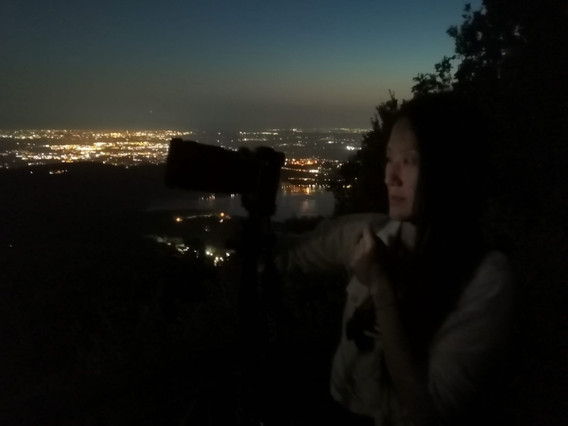
Photo of Suwon Lee by Giovanni Chiodi
The Cisneros Institute’s programs are conducted in conjunction with Contemporary and Modern Art Perspectives (C-MAP), MoMA’s global research initiative, which is supported by The International Council of The Museum of Modern Art.
Related articles
-
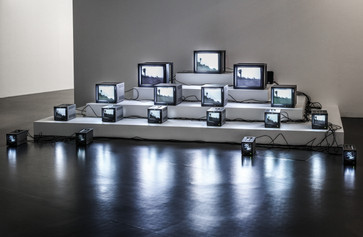
Histories of Landscape during the Colonization of the Americas
Artist José Alejandro Restrepo discusses his work and the paradoxes of the colonial exploration of Latin America.
José Alejandro Restrepo, Madeline Murphy Turner
Oct 6, 2020
-
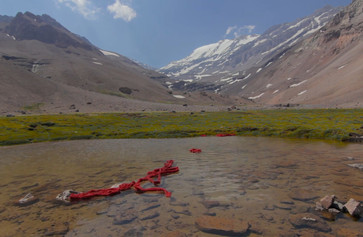
Introducing the Cisneros Institute’s Cumbre Aconcagua
Artists and theorists explore the intimate relationship between art and the environment in Latin America.
Inés Katzenstein
Jul 31, 2020

